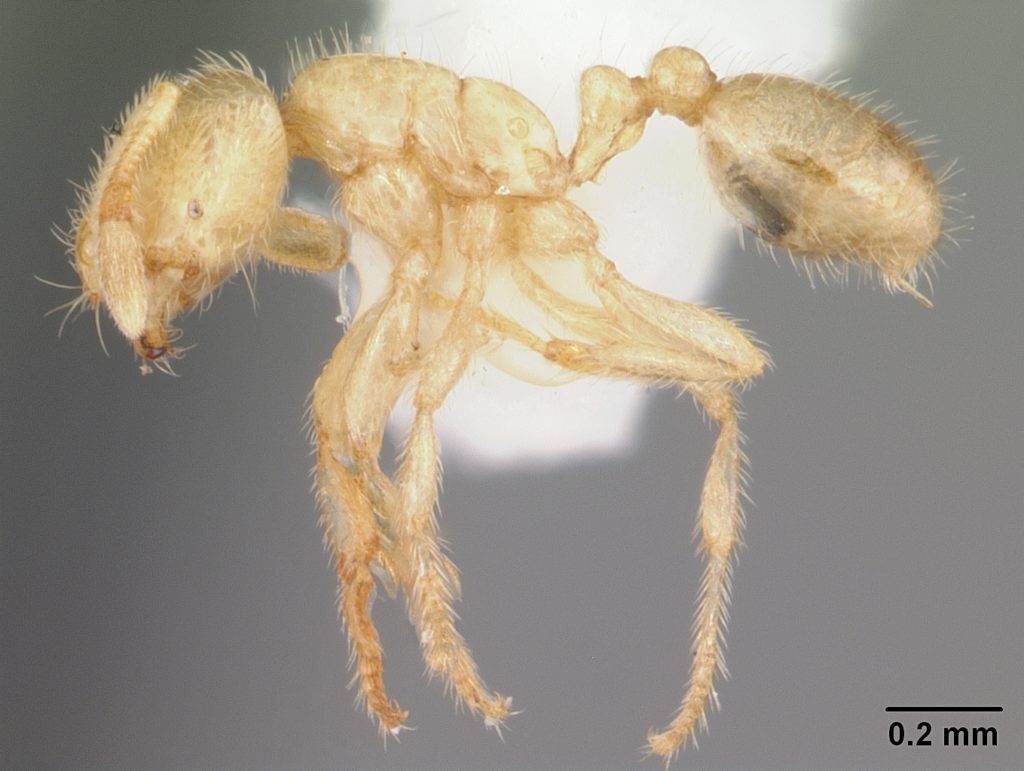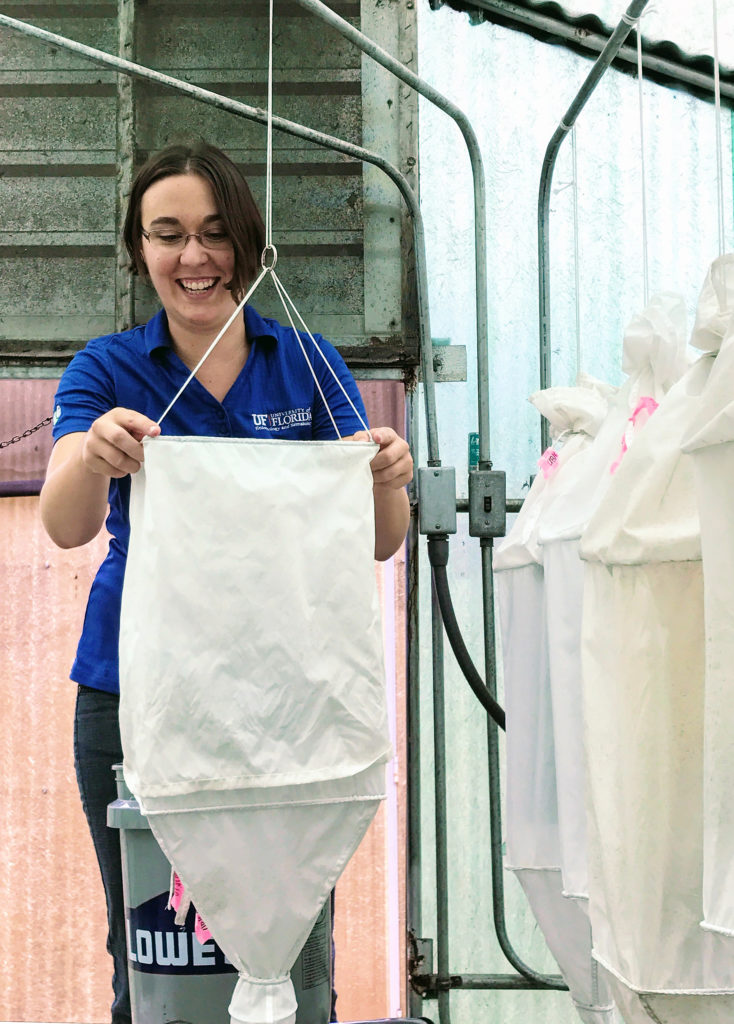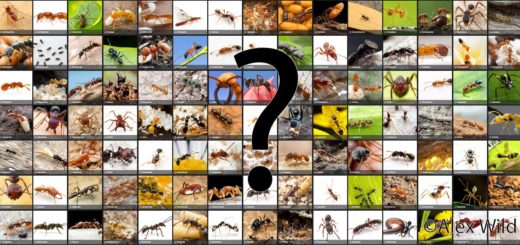The Latitude Project – 30° North – Florida
Myrmecological News Blog has launched ‘The Latitude Project’ – we circle the globe by latitude to collect impressions of the ants of the world in respect to their diversity, ecology, life history, and conservation biology. Starting with 60° North, we highlight ants of every continent by interviewing local ant researchers. Our fourth interview is with Rachel Atchison and Leo Ohyama in Florida (following Riitta Savolainen in Finland, Javier Ibarra-Isassi and Jean-Philipp Lessard in Canada, and Dmitry Dubovikoff in Russia).

Rachel Atchison 
Leo Ohyama
An Interview compiled by Florian M. Steiner

MNB: What are your GPS coordinates?
RA: 29.63, -82.36 (north-central FL). This is the location of the University of Florida’s Entomology and Nematology department in Gainesville, FL, where we are graduate students in Dr. Andrea Lucky’s lab (www.andrealucky.com) of ant biodiversity and systematics.
MNB: What are the annual mean temperature and the annual precipitation in your area?
RA: The average yearly precipitation in Gainesville (since 1981) is approximately 1332 mm / year. The average yearly temperature is 20.6 °C. These data (averaged over the years 1981 – 2018) were obtained from the NASA Langley Research Center POWER Project funded through the NASA Earth Science Directorate Applied Science Program (Sparks 2018).
MNB: Which ant subfamilies occur there?
RA: Myrmicinae, Dolichoderinae, Formicinae, Amblyoponinae, Proceratiinae, Ponerinae, Ecitoninae, and Pseudomyrmecinae.
MNB: What is a typical natural habitat in your area? (Can you please send us one or more high- quality photographs?)
RA: Many of our remaining natural lands (biological stations, national forests, state parks) are or once were longleaf pine forests (Fig. 1). Longleaf pine forests are a biodiverse ecosystem managed by prescribed burning (Fig. 2) to promote an early successional state upon which many endemic species rely, that is, gopher tortoise (Gopherus polyphemus), red-cockaded woodpecker (Leuconotopicus borealis), and eastern indigo snake (Drymarchon couperi). The Florida Harvester ant (Pogonomyrmex badius) is a highly conspicuous seed-harvesting ant species common to this area.

years for the past 20 years. The pink flags note plot borders for observational studies of ant recruitment to seeds and tuna-honey baits; Ordway-Swisher Biological Station(© Rachel Atchison).

MNB: How many ant species typically occur in this habitat?
RA: Longleaf pine (Pinus palustris) forests can be classified into different habitat types: savanna, flatwoods, and sandhill, among others. I conduct my research in a longleaf pine sandhill habitat at Ordway-Swisher Biological Station. Through my sampling methods (leaf litter sampling, pitfall traps, and baiting with tuna and seeds) I have detected 56 ant species. Since I did not attempt to sample arboreal ants, I believe this is an underestimate of the total ant species that occur in this habitat. Regardless, the species richness of this habitat comprises over 20% of the total described ant species in Florida. More information about this project can be viewed in the video below: (© University of Florida IFAS Research)
MNB: What is your favourite ant from your area, and what fascinates you most about it?
LO: A fascinating and favorite ant or group of ants from our area would be the Solenopsis thief ants. They’re called thief ants because they’re known to practice lestobiosis, an interaction where smaller-bodied ants (in this case thief ants) stealthily tunnel into the nests of larger ant species and steal their brood or larvae for later consumption (Hölldobler & Wilson 1990). It’s a unique form of predation/parasitism because it involves the targeting of a very specific life stage of the prey species. Unlike army ants that forage broadly across the ground surface in raiding columns or swarms and attack social insect prey by infiltrating their colonies, thief ants and their brood “heists” are likely less confrontational. Their small-body sizes may also give them an advantage in stealthy infiltrations as they are one of the smallest ants in the world measuring 1 – 2 millimeters in length.
We know so little about them yet they’re a very diverse and globally cosmopolitan group found in many ant communities and ecosystems (Pacheco & MacKay 2013). They’re also notoriously difficult to identify as many species show signs of morphological convergence. This is most likely another reason why they’re understudied.
MNB: Where does your favorite ant species nest, and how many workers live in one nest, roughly?
LO: Most thief ants are subterranean meaning that they almost live exclusively belowground. However, some species are arboreal like Solenopsis picta, a species that lives in hollow twigs. Others can also be litter-dwelling such as Solenopsis carolinensis (Fig. 3). In terms of worker
numbers in a nest, a confident estimate is not really known especially for the subterranean thief ants. People who have been lucky enough to stumble on a thief ant nest in the soil have reported numbers of less than ~1000 workers. I have drilled baits into the soil and have seen some baits being monopolized by over 1000 workers three days after setting them up (Fig. 4).

MNB: Do you know the mating strategy of Solenopsis thief ants, how new nests are founded, and how many queens are in one nest?
LO: Unfortunately, not much is known about their mating strategy. Perhaps the best-known mating strategy from this group would be in Solenopsis pergandei (Fig. 5), a subterranean species. Solenopsis pergandei mating flights usually occur in the summer months especially after a night of heavy rain. They build conspicuous mounds aboveground from which their reproductive castes exit. This is the only time that this subterranean ant leaves an aboveground marker indicating their existence. The flights usually occur right before dawn. When these mounds are dug up a few hours later, some of the reproductives that didn’t take flight can still be seen. I have seen these mounds as early as May and as late as September in Central Florida. Some thief ant species are known for having multiple queens in a nest.

MNB: What do workers feed on? What do they feed to larvae?
LO: Although they are known as brood thieves, some species are most likely generalist omnivores as they have been observed feeding on nuptial queens, beetle larvae, and an assortment of other arthropods. However, the question remains on whether certain species are simply opportunistic brood thieves or if they have specialized to primarily feed on brood, given
its highly proteinaceous value. I have some work in review that demonstrates that these ants can regulate the co-occurring ant community, especially the most abundant species, through what is most likely lestobiosis. The work involved a large-scale field experiment where thief ant diversity was reduced in a natural environment for ~1.5 years and the co-occurring ant community was sampled continuously. Interestingly, the species that experienced higher levels of predator release from thief ants also tend to have very simplistic nest architecture designs making me believe that nest architecture may be an extended phenotype that is under selective pressure from factors such as subterranean predation. Nest complexity may arise from the need to better protect brood and larvae.
MNB: Is the species territorial, and if so, how does it defend its territory?
LO: Nothing is known about thief ant territoriality. They do tend to nest right next to the nests of other ant species. I have run multiple behavioral assays with S. carolinensis workers baited at points separated by five meters and there was aggressive behavior between workers from different baits 100% of the time. They also used their stinger as a primary weapon in these clashes. A lot people think that thief ants don’t have stingers but that’s far from the truth. I have been stung by S. pergandei and although it is not as painful as a fire ant it is still noticeable. They don’t seem to use their sting as a primary defense when provoked and prodded by human fingers.
MNB: How common is your favourite ant, and is it threatened?
LO: Thief ants are very common and found in most habitat types, especially in the southeastern United States. They can be found in both disturbed and natural habitats. Although in well-drained habitats like the high pine sandhill found in the southeastern US, they really do dominate the belowground ant diversity (Ohyama & al. 2018). However, despite their abundance, nothing is really known about them. Given the global level of homogenization we see in ecological communities, it would be a good idea to start looking into these ants before they to become threatened. They have obviously diversified doing something right, and it may involve becoming top predators in a belowground food web.
References
Hölldobler, B. & Wilson, E.O. 1990: The ants. – Harvard University Press, Cambridge, MA, 446 pp.
Ohyama, L., King, J.R. & Jenkins, D.G. 2018: Diversity and distribution of Solenopsis (Hymenoptera: Formicidae) thief ants below ground. – Myrmecological News 27: 47-67.
Pacheco, J. & MacKay, W. 2013: The systematics and biology of the New World thief ants of the genus Solenopsis (Hymenoptera: Formicidae). – Edwin Mellen Press, Lampeter, Ceredigion, Wales, UK, 501 pp.
Sparks, A. 2018: nasapower: A NASA POWER global meteorology, surface solar energy and climatology data client for R. – Journal of Open Source Software 3: art. 1035.










Recent Comments